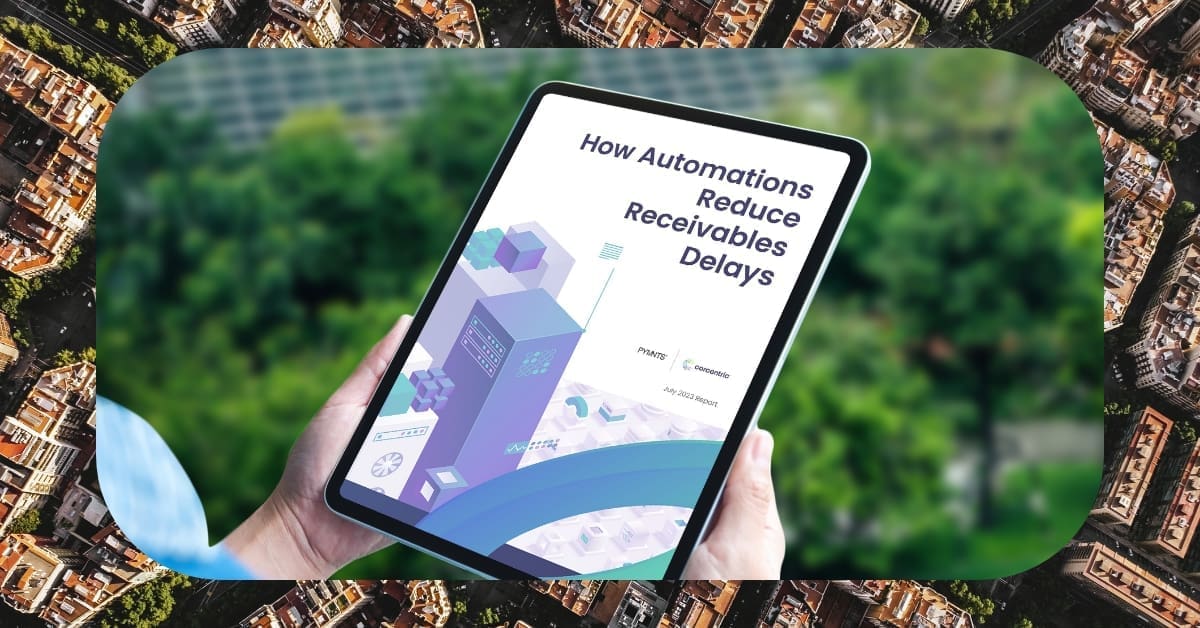The C-Suite Guide To Accounts Receivable As A Service
Corcentric

ACCOUNTS RECEIVABLE AS A SERVICE
Accounts receivable, or AR, is system used to track incoming payments such as customer invoice payments or other payments owed to business. Over time, challenges have been experienced in receiving payments on time, as well as in managing customer disputes and credit management. This is where accounts receivable as service (ARaaS) can provide real benefit. As cloud-based technology solution, ARaaS can streamline and simplify the accounts receivable process, ultimately enabling business to scale its operations more quickly.
ARaaS is modern, cloud-based system that helps to automate collections and accounting activities. It combines the principles of Enterprise Resource Planning (ERP) and accounts receivable software to reduce manual data entry. Furthermore, it can help to control costs and reduce organizational risks associated with manual systems.
To best use ARaaS, businesses should begin by clearly understanding the types of payments they will be receiving and how they will be recorded, as well as what documents they need to generate in order to provide accurate customer invoices.
Step-by-Step Guide
1. Understand your payment methods and document needs Start by understanding the type of payments you will be receiving and how they should be recorded and audited. Also, understand what documents you need to generate in order to provide accurate customer invoices. This is the first step in setting up your accounts receivable.
2. Establish customer accounts Build customer profiles and assign accounts to each customer. This information can help to ensure that payments are processed expeditiously and errors are avoided.
3. Setup an automated billing system Configure an automatic billing system for customer payments. This automated system should include customer invoicing, payment receipts, customer credit limits, and payment reminders.
4. Integrate customer accounts with ARaaS Integrate customer accounts into your ARaaS system. This will ensure that customer data and payments are tracked efficiently and accurately.
5. Implement customer notification system Go beyond automatic invoicing and payments by implementing customer notification system. This will help to better manage customer relations and ensure payment compliance.
6. Develop customer reporting system Develop customer reporting system to provide data and insights into customer performance. This will help to identify areas where customer experience can be enhanced.
7. Create early warning signals Set up early warning signals to alert accounts receivable personnel when customer payments are delinquent. This will help to prevent prolonged delays in payment collection.
8. Investigate customer disputes Investigate customer disputes promptly and effectively with ARaaS to ensure customer satisfaction and ongoing customer relationships.
9. Keep customer data secure Ensure customer data is kept secure and up-to-date with security protocols in line with the relevant industry standards.
Conclusion
Accounts receivable as service is powerful and modern system that can help businesses streamline and simplify their accounts receivable processes. From customer accounts to automated billing systems, customer reporting to customer dispute resolution, ARaaS can help businesses to manage customer payments more effectively and efficiently while reducing risks associated with manual systems. By following the step-by-step guide above, businesses can ensure that they make the most of ARaaS to get the greatest benefit from their investments.

